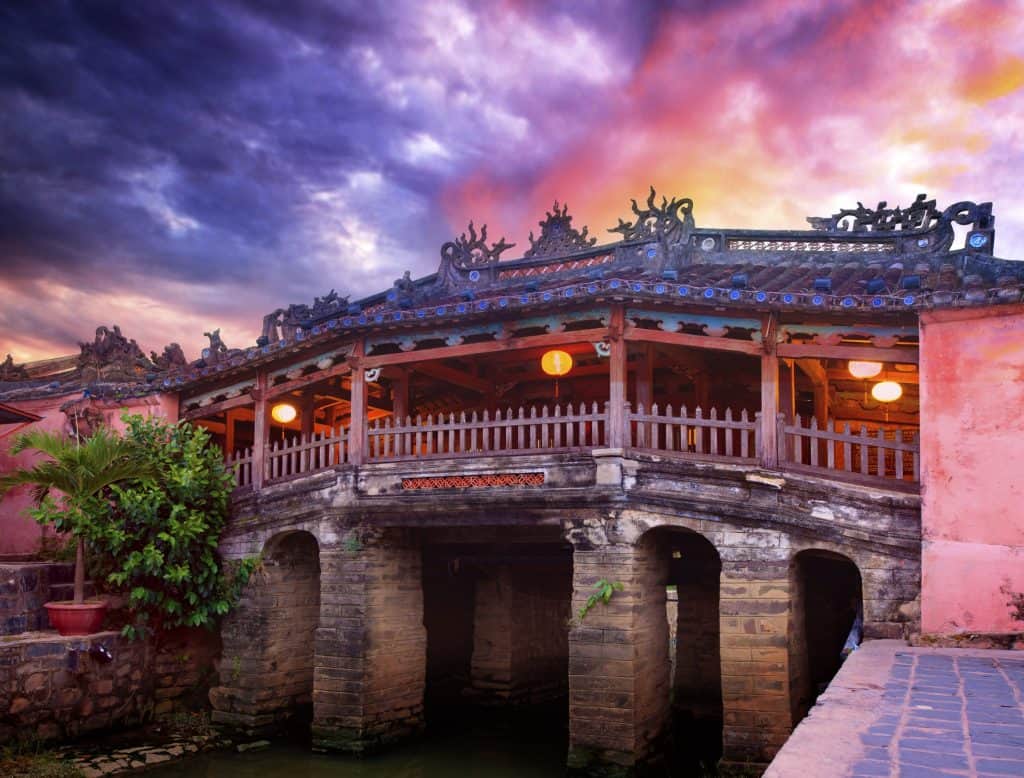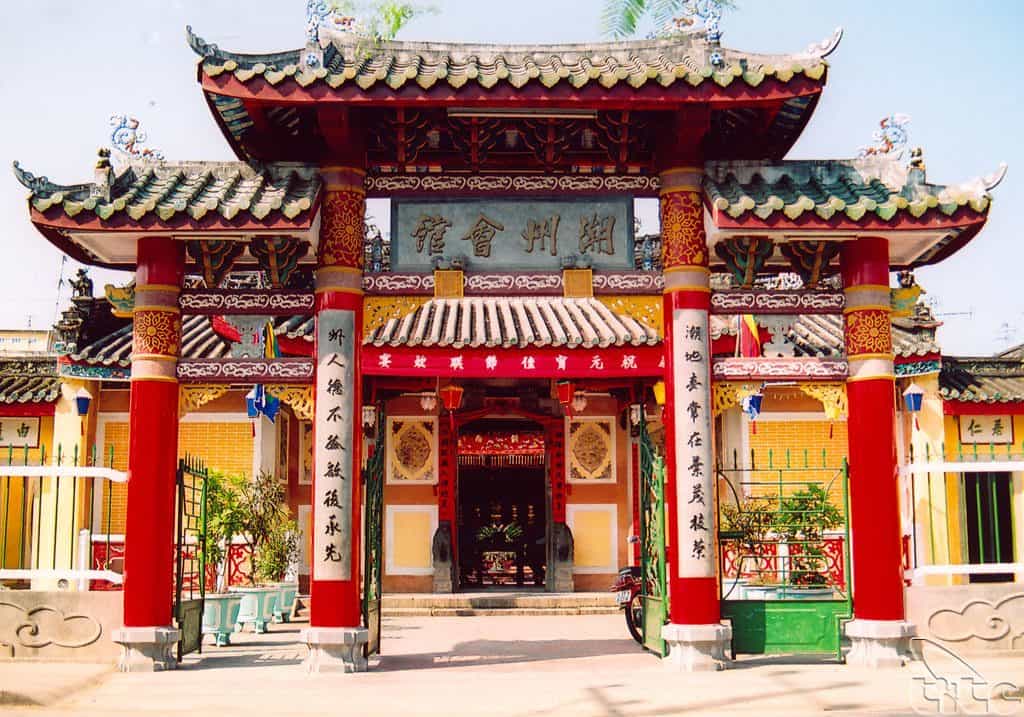For visitors to Vietnam one of their must-see destinations is the ancient, picturesque town of Hoi An, the translation of which is “peaceful meeting place”. Although the town has had a turbulent history, thankfully it was virtually untouched during the Vietnam War (or American War as it is known in Vietnam) thanks to the co-operation of both sides in the conflict.
UNESCO declared the old town a World Heritage Site in 1999 to honor its wonderful preservation and great example of a South-East Asian trading port of the 15th to 19th Centuries, with buildings displaying a unique blend of local and foreign influences. Today there are strict rules in place to safeguard the old town’s unique heritage and more than 800 historical buildings have been preserved, so much of the town looks as it did several centuries ago.

Japanese Bridge in Hoi An. Vietnam
Many of the old houses also offer short guided tours, for which a town ticket must be purchased.
However, of all the sites in Hoi An probably the most iconic is the beautiful Japanese Covered Bridge. The Japanese community first constructed this bridge in the 1590s to link them with the Chinese community across the stream. Over the centuries, the ornamentation has remained relatively faithful to the original Japanese design. The entrances to the bridge are guarded by statues: a pair of monkeys on one side, a pair of dogs on the other. Entrance to the bridge is free but should you wish to visit the small temple built into the bridge’s north side a ticket is required. The bridge is especially beautiful at night when it is lit with hundreds of colored lanterns for which Hoi An is famous.
A few steps down from the Japanese Covered Bridge is Phung Hung Old House, admission is by ticket. The entrance hall is decorated with exquisite lanterns, wall hangings and embroidery. The suspended altar is particularly impressive.

There are several pagodas in Hoi An, among them Chuc Thanh Pagoda at Khu Vuc 7, Tan An. Founded in 1454 it is the oldest pagoda in the town and contains many ancient artifacts. Phac Hat Pagoda at 673D Hai Ba Trung has a huge central courtyard containing hundreds of potted plants and bonsai trees. The façade is constructed of colorful ceramics and the elaborate roof is decorated with dragons. Phuoc Lam Pagoda at Thon 2a Cam Ha was founded in the mid seventeenth century, the Head Monk was An Thiem, a child prodigy, who became a monk at the age of eight.
One of the most notable places of worship is Quan Cong Temple at Chua Ong, 24D Tran Phu, founded in 1653 and dedicated to Quan Cong. He was an esteemed Chinese general, worshipped as a symbol of loyalty, sincerity, integrity and justice. Notice should be taken of the carp-shaped rain spouts on the roof surrounding the courtyard. The carp is popular in Hoi An and a common symbol of patience in Chinese mythology.
Hoi An has four museums highlighting the history of the region.
The Museum of History and Culture at 13 Nguyen Street was originally a pagoda built in the seventeenth century and is adjacent to the Guan Yu Temple. The Hoi An Folklore Museum at 33 Nguyen Thai Hoc Street is the largest two-storied wooden building in the town. The Museum of Ceramics is located at 80 Tran Phu Street in a wooden building originating from 1858 while The Museum of Sa Huynh Culture is at 149 Tram Phu Street and displays over 200 artifacts from the original settlers of the Hoi An site.
As a break from sightseeing there are numerous places to eat, ranging from typical pavement establishments right up to five star hotels. At night there is nothing more delightful than a stroll along the Bon River, decorated with hundreds of Hoi An’s signature colored lanterns, a lasting memory of a most fascinating town.



Leave A Reply